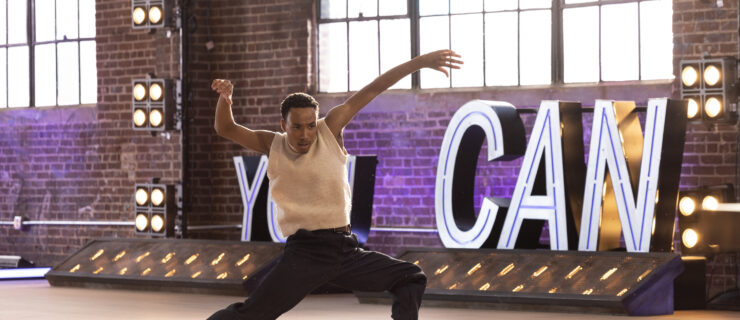Feeling the Flamenco Beat
Belén Maya and Manuel Liñán in Los Invitados (photo by Javier Fergo, courtesy Jerez Festival)
With its precise, tap-style footwork and intricate hand and arm movements, flamenco dance embodies both the grounding heaviness of life’s challenges and the uplifting nature of the human spirit. It’s also based on an extremely complex rhythmic structure. But that complexity shouldn’t scare off dancers new to the style, especially those looking to improve their sense of timing.
Because flamenco dancers are in constant dialogue with their music—particularly when performing with live musicians—they have a highly developed sense of rhythm. For example, while the musicians perform one beat, a flamenco dancer might tap out a counter rhythm with her feet, creating appealing syncopation.
How can you channel that flamenco vitality, and use it to develop your own coordination and timing? Dance Spirit talked to star flamenco dancers at southern Spain’s famous Jerez Festival to find out.
Play with the Beat
Trying to pinpoint the rhythm of a complicated piece of music can be difficult. Dancer Domingo Ortega recommends making a game out of identifying everyday rhythms, so that your ears get used to picking up different beats. “It may seem silly, but I love playing with the beat of almost anything I hear,” says Ortega, who has taught and choreographed flamenco around the world. “When I’m driving, for example, I’ll create a counter rhythm to the clicking of the turn signal.” Don’t be afraid to drum out a beat with your fingers on a tabletop, or to clap along to a song while standing in line at the grocery store. If you involve rhythm in your daily life, that sense of timing will come more naturally to you in the dance studio.
Study with a Metronome
If you’re rhythmically challenged, a metronome can help you get on the beat—and stay there. Even flamenco pros swear by the simple device. Belén Maya—daughter of dance legend Mario Maya and one of the most renowned female flamenco dancers of the last 10 years—relies on a metronome to help her maintain coordination in the studio. “The metronome gets me to keep a steady speed when I’m doing rhythmic foot exercises,” she says. Over time, its consistent beat will work its way into your head—and your body.
Olga Pericet in Pisadas (photo by Javier Fergo, courtesy Jerez Festival)
Forget Counting
Acclaimed flamenco dancer Joaquín Grilo says great performers “make the body, the interpretation and the rhythm independent of one another,” being sure not to place too much emphasis on any one piece of the puzzle. If you devote all your mental energy to counting out the rhythm, the other facets of your performance will suffer.
“You can count when you’re learning a piece, or if there are steps you have yet to fully grasp,” Ortega says. “But it’s impossible to count and perform. If you count, you’re no longer responding to the music—you’re focused on nothing but the rhythm.” When preparing for a performance, give yourself plenty of time to practice intricately syncopated choreography. After enough repetition, the rhythm will become something you feel instinctively, rather than something you have to count to understand.
Learn from the Greats
One of the best ways to learn timing and rhythm is to take class from dancers who are already masters. Expert flamenco dancers can help you understand rhythm from the inside out. Even as an established artist, Maya still takes classes with a variety of teachers. “It keeps my mind agile, and it prevents me from becoming repetitive in my rhythms,” she says.
Don’t live in a flamenco hotspot? No worries: There are all kinds of video resources available online—films of flamenco rhythm masters that you can study on your own time. Follow the example of up-and-coming flamenco dancer Alberto Sellés, who has found old videos of dance masters to be invaluable resources: “These dancers are the pillars of our artform, and by watching their videos, I can learn from them, too.”



